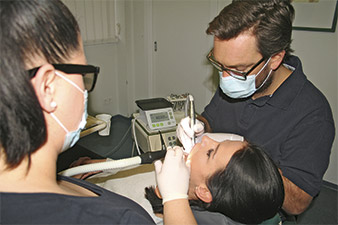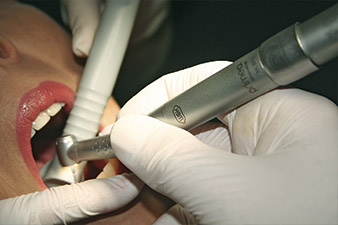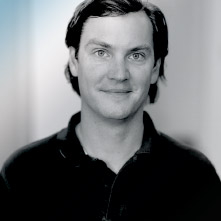Primea Advanced Air – air-driven high-speed drive solution
Controlled high speed
Dental turbines are well known to be faster for preparation than motor-driven contra-angle handpieces. But they have always had problems with precision and control. This seems to be changing with a new generation of turbines. For the first time the bur speed can be precisely controlled. Dr Christian Müller, from Salzburg, explains what this means for work in the practice in the following interview.


Turbines are used to drive burs and have been used for conservative and prosthetic treatment for many years. What is the difference from the motor-driven contra-angle handpiece?
Dr Müller: Turbines are powered by compressed air, which rotates a small turbine impeller. Depending on the design and operating pressure, they reach speeds of 300,000–450,000 rpm (revolutions per minute). However, conventional turbines cannot be controlled for precision work. The very high bur speeds are simply not constant.
How can the problem be solved?
Dr Müller: By a combination of air drive and electronic control, like in the Primea Advanced Air. This guarantees consistent removal of tooth structure.
Even as the pressure is increased?
Dr Müller: Even as the pressure on the bur is increased! The bur speed of the new turbine can be adjusted from 60,000 rpm to 320,000 rpm and remains constant throughout treatment.
However, the use of turbines is not always welcomed by universities or is viewed with scepticism. What are the reasons for this?
Dr Müller: With full speed on the tooth and inadequate cooling the tooth may be overheated and as a result the heat may damage nerves or pulp. Therefore the focus at many universities is currently on the use of contra-angle handpieces powered by electric motors that minimize the risk of overheating by using lower speeds. The new Primea Advanced Air could be the start of a paradigm shift. Ultimately, speeds and the removal of tooth structure can now be controlled with the new ergonomically light turbine.
The view of turbines in dental practices is not so sceptical; conventional turbines are and have been used, specifically because of the high speeds.
Dr Müller: Not in my practice. The inability to control the bur speed is too risky for me. Up to one and a half years ago we were using motor-driven handpieces and contra-angle handpieces exclusively. With the new Primea Advanced Air the bur speed can now be adjusted on the display. You can adjust the speed of the rotating instrument from very low to the maximum speed. If a medium speed has been selected, it is maintained even if you put your foot to the floor on the foot pedal.
When is a motor-driven contra-angle handpiece still needed now?
Dr Müller: Virtually never. I am using the Advanced Air exclusively for preparation of cavities and crowns, separation of crowns and bridges and also finishing – ultimately for the complete high-speed range of my everyday work. The electric motor is the choice for slow preparation and endodontic applications. The new turbine is also smaller and easier to handle. The lighting technology with the 5x ring LED is also superior to that of motor-driven contra-angle handpieces. You simply get a better view of what you are doing.
Please tell us the main indications for the high-speed range in your practice.
Dr Müller: The main indications include
- preparation of cavities and crowns,
- separation of crowns and bridges,
- removal of all-ceramic restorations, composite fillings and amalgam fillings and
- finishing.

Are there still problems with the direct integration of the new turbine at the chair?
Dr Müller: We are working with a small additional device that we have attached to our dental unit. This works perfectly.
The additionally required compressed-air hose can be connected to the outside of my dental unit. Selected dental units also offer full integration of the Primea Advanced Air.
You switched from motor-driven contra-angle handpieces to the new turbine handpiece. How steep is the learning curve?
Dr Müller: The tactile feeling at the tooth was the greatest change for me. It feels different with the new turbine handpiece, but the difference is difficult to explain. At first I had the feeling that less substance was being removed, which is definitely not the case. However, after a few days you get used to it. After 15 years of working with electric motors every day we have now completely switched over to the Advanced Air.

Thank you for your time.
Dr Christian Müller
studied dentistry in Innsbruck and has been running his own practice in Salzburg since 2006. His specialties include aesthetic dentistry and prophylaxis.
Consistent removal of tooth structure, even with increasing pressure, with adjustable bur speed.




Komentáře